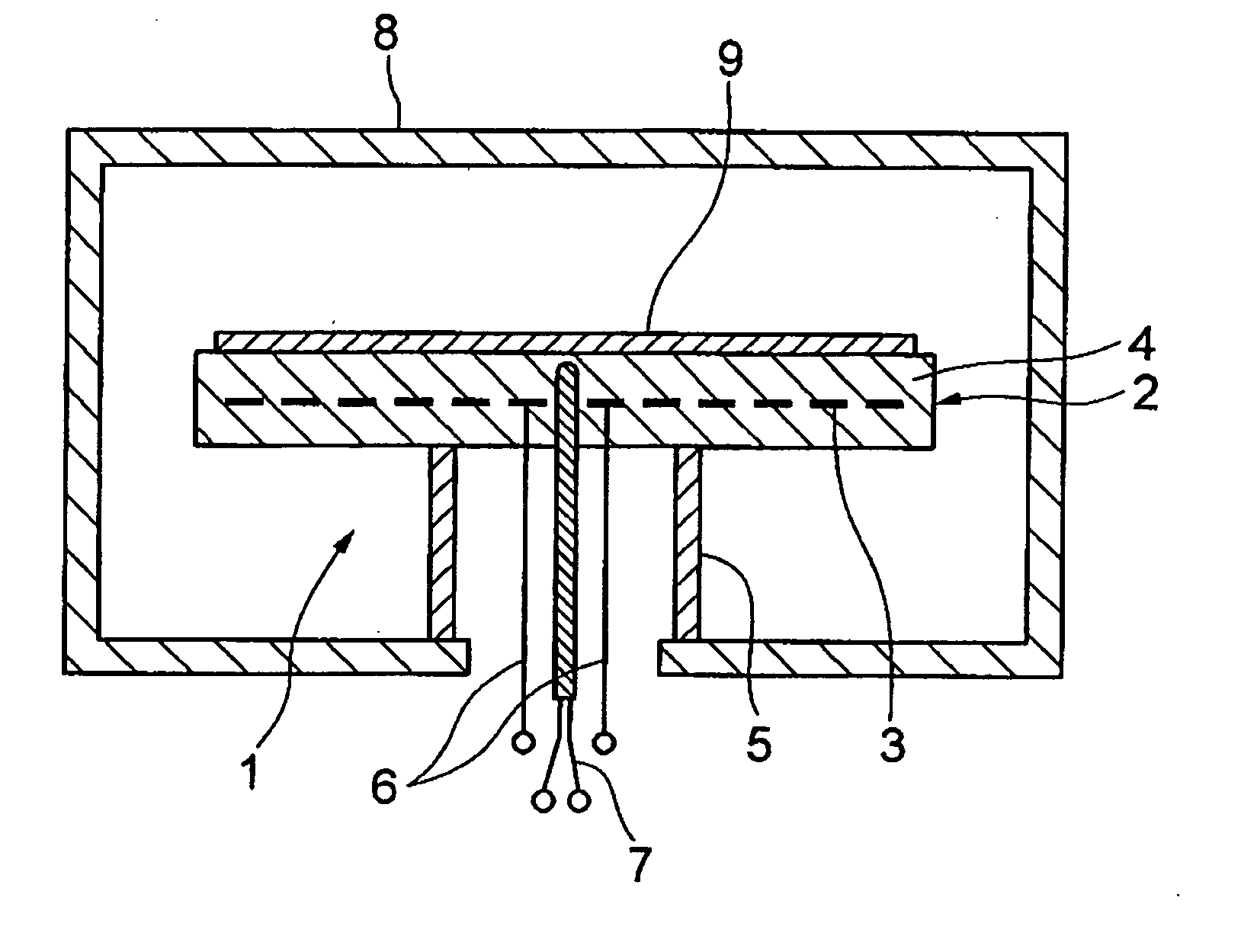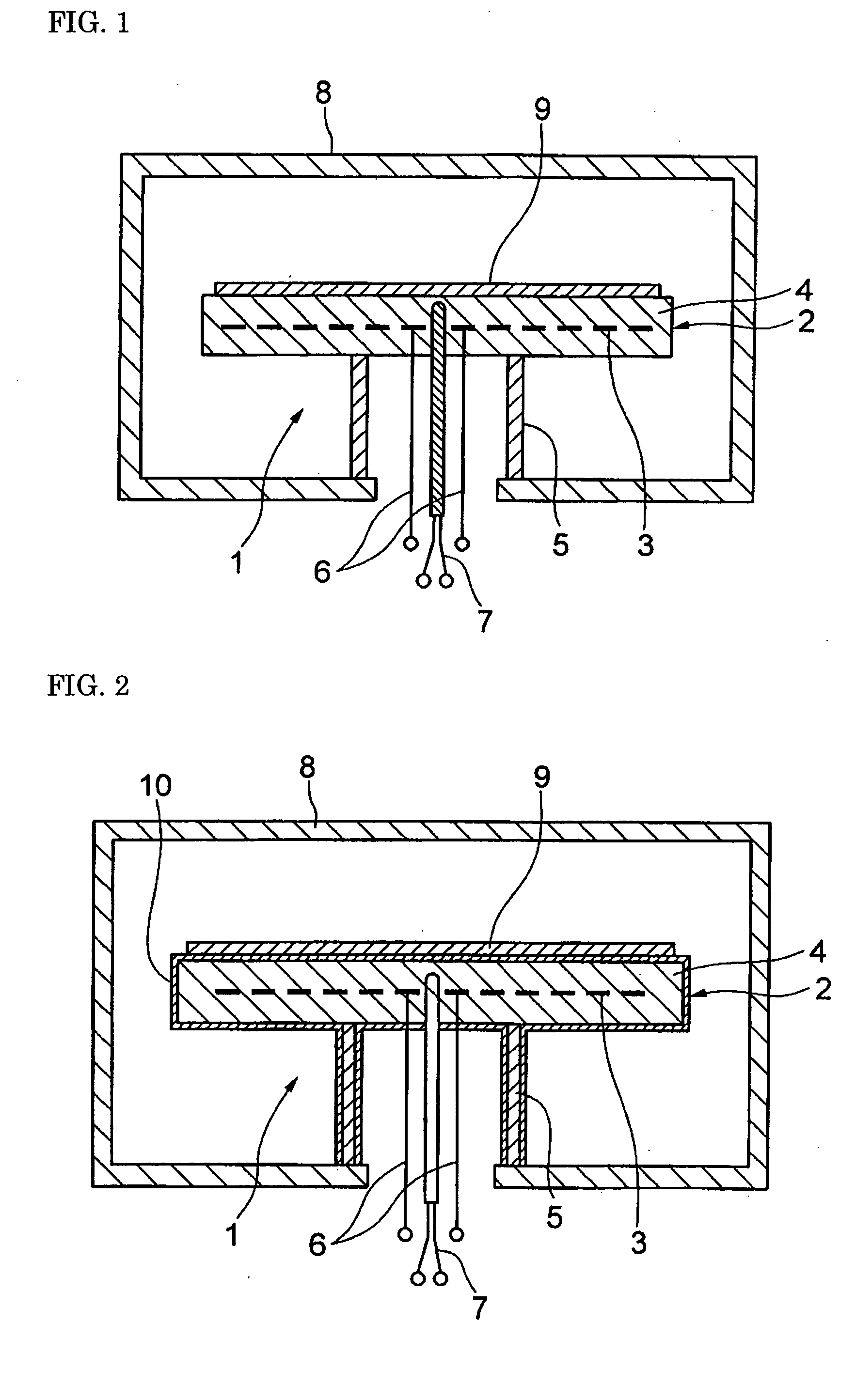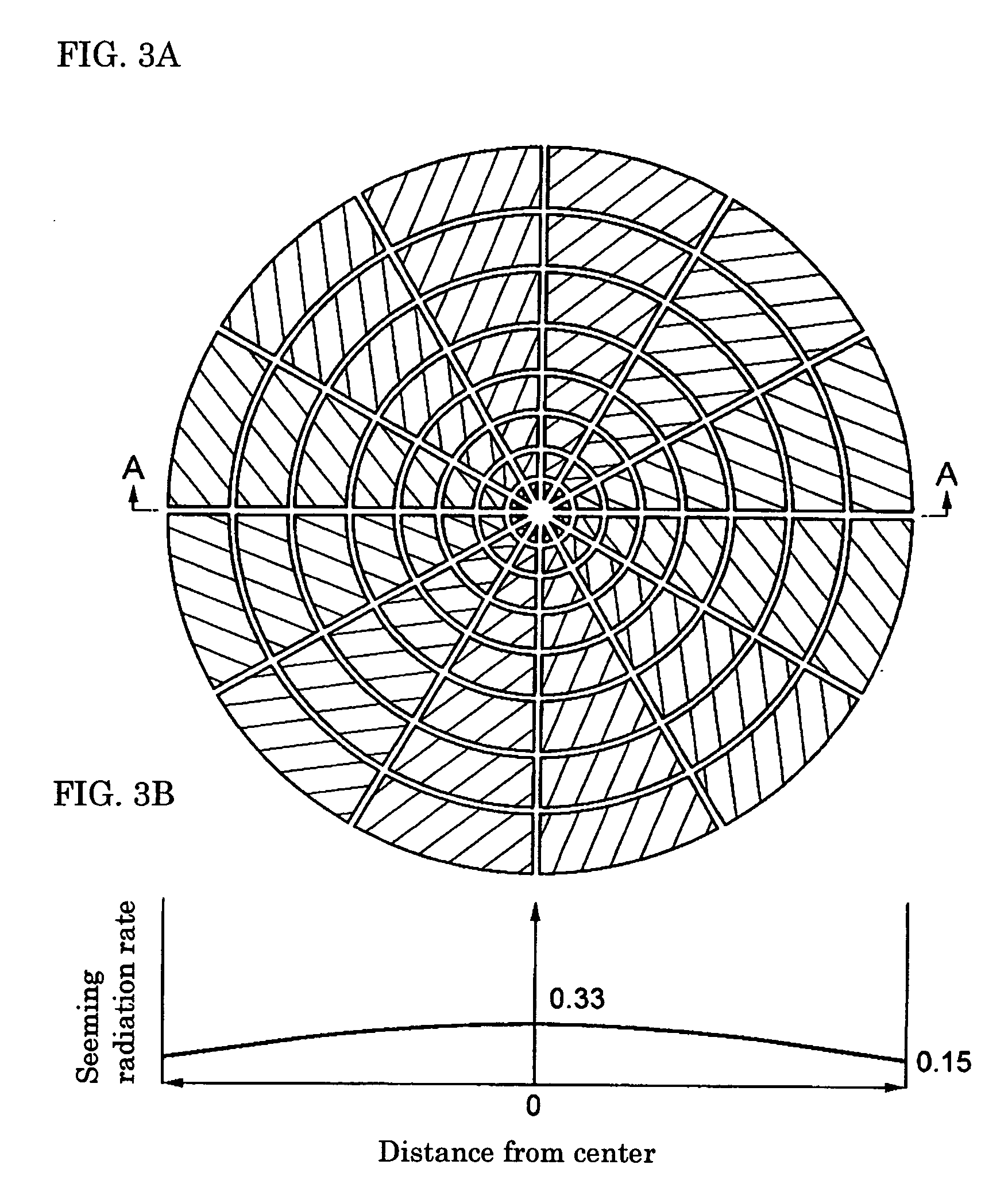Heater and heating device
- Summary
- Abstract
- Description
- Claims
- Application Information
AI Technical Summary
Benefits of technology
Problems solved by technology
Method used
Image
Examples
Embodiment Construction
[0024] A to-be-placed-on-heat-subject heater member of the invention is described by referring to FIG. 2 showing a specific example thereof. This to-be-placed-on-heat-subject heater member 1 has a basic structure similar to the conventional one shown in FIG. 1, is structured by a heater substrate 2 including a ceramic base 4 with a heat-generating wiring section 3, and a tubular support body 5 made of ceramic or others, and is provided with a feed wiring configuration 6 electrically connected to the heat-generating wiring section 3, a thermocouple 7 for monitoring the heater temperature, and the like. The to-be-placed-on-heat-subject heater member of the invention is formed with a low-radiation-rate film 10 entirely over at least the heat-subject-placing surface of the heater substrate 2 on which at least a heat subject 9 is to be placed.
[0025] As shown in FIG. 2, the low-radiation-rate film 10 is preferably formed entirely over both the heater substrate 2 and the support body 5. M...
PUM
| Property | Measurement | Unit |
|---|---|---|
| Temperature | aaaaa | aaaaa |
| Flexibility | aaaaa | aaaaa |
| Heat | aaaaa | aaaaa |
Abstract
Description
Claims
Application Information
 Login to View More
Login to View More - R&D
- Intellectual Property
- Life Sciences
- Materials
- Tech Scout
- Unparalleled Data Quality
- Higher Quality Content
- 60% Fewer Hallucinations
Browse by: Latest US Patents, China's latest patents, Technical Efficacy Thesaurus, Application Domain, Technology Topic, Popular Technical Reports.
© 2025 PatSnap. All rights reserved.Legal|Privacy policy|Modern Slavery Act Transparency Statement|Sitemap|About US| Contact US: help@patsnap.com



